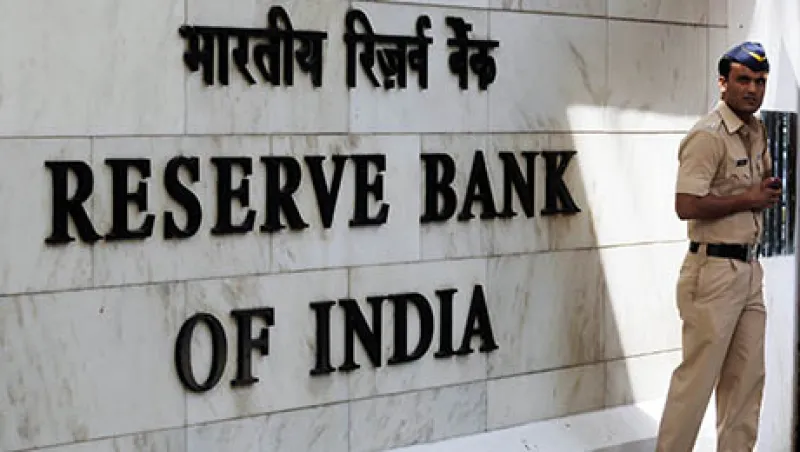
A police officer stands beside Reserve Bank of India (RBI) signage at the central bank's headquarters in Mumbai, India, on Tuesday, April 1, 2014. Indiaís central bank left its key interest rate unchanged as consumer-price inflation eased to a two-year low and the rupee strengthened, increasing scope to support growth ahead of national elections starting this month. Photographer: Vivek Prakash/Bloomberg
Vivek Prakash/Bloomberg

